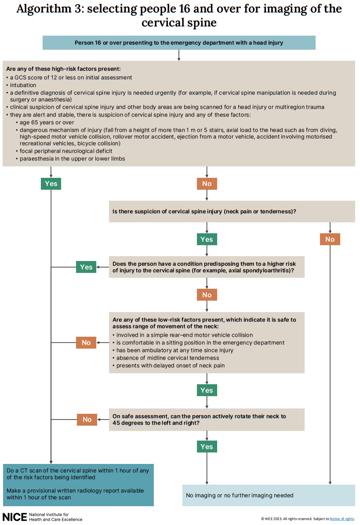A secondary survey begins only after the primary survey is complete, abnormalities have been reassessed, resuscitation is underway, and the patient’s observations are improving. It involves a full head-to-toe assessment, including history, examination, and vital sign review.
At this stage, review the admission history and past medical history—especially prior falls, fracture risk, spinal conditions, and medications (notably antiplatelets or anticoagulants). Combine this with ward staff input and your initial assessment to consider possible causes of the fall.
i. History
- Was the fall from height (eg over the rails of a raised bed) or because of syncope?
- Does the patient have a history of spinal fracture, or do they have / are at risk of osteoporosis or other spinal pathology?
- Have you already identified external evidence of head or facial injuries?
- Is the patient complaining of new neck pain?
ii. Examination
- Is there obvious new neck or spinal deformity?
- Palpate for midline tenderness.
- Any abnormal neurology?
- If C-spine injury is suspected at this stage using flowchart below (Fig 2) to assist decision, progress to immobilising C-spine and do not move neck further.
- Follow flowchart below (Fig 2) – if deemed safe, assess neck movement by asking patient to rotate neck 45° to the right and left.
iii. Management
Follow flowchart below (Fig 2) to determine whether a CT scan of the C-spine is required. Clear communication with radiology is required to organise appropriate manual handling for an immobilised patient.
Follow guidance for imaging as per NICE guideline NG232:
Fig 2. Algorithm for selecting people 16 and over for imaging of the cervical spine
- Click ‘Back’ on your browser to return to the Secondary survey section of the explanatory notes.





